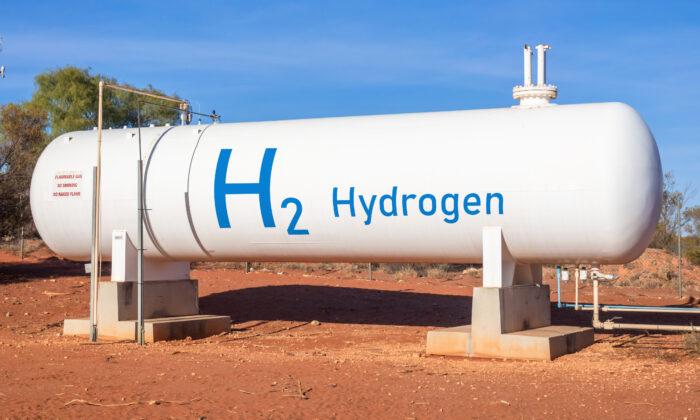Australia’s Prime Minister has invested $70 million (US$48.87 million) to build a hydrogen hub in northern Queensland as part of Labor’s commitment to reduce carbon emissions by 43 percent in 2030.
Speaking to reporters at Townsville, Queensland, Anthony Albanese said the plan is part of a half-a-billion dollar program that Australia’s centre-left Labor government is investing in hydrogen facilities nationwide.
“This is about the jobs of today as well as the jobs of the future,” Albanese said on Saturday. “Right here in Townsville, as you drive into this facility, you see over a million solar panels. It is just an example of where the future is here right now. The question is—can Australia seize the opportunities that are there for growth in the future?”He noted that research on renewable energy solutions “is where it is all headed” in economies the world over, and that Labor’s investment will mean that Queensland with its zinc and aluminium refineries reliant on high energy usage won’t be left to become non-competitive.
“But the reason why we’re doing hydrogen hubs around Australia is that the growth and potential of this industry isn’t a niche industry. This is something that will make an enormous difference to Australia’s economy, not just in terms of domestic production and consumption using hydrogen to drive the advanced manufacturing facilities.”
He urged Australia to join the renewable energy race along with Europe and the United States, to prepare for a future landscape of “carbon barriers and tariffs.”“Or, you can get on the front foot, you can change those industries, and their carbon footprint, so that they become not just industries that can survive, but industries that can thrive. Because of the natural advantages that we have, particularly here in Queensland,” the prime minister added.
Despite Labor’s push for renewable energy, there have been concerns that technology is a long way off from efficiently tapping into green hydrogen gas in a way that can power the country, with problems about the new technology receiving little attention.
In an address to the 47th Australian Parliament, newly elected federal MP Colin Boyce—the representative for Flynn, a heavy coal-mining region located in central Queensland—said the city of Gladstone in his electorate was slated for a major shift with the rise of hydrogen energy if it can be produced in a carbon-neutral way.
“Hydrogen is promoted as a saviour, the silver bullet for future energy needs,” the Liberal-National MP told Parliament. “Hydrogen is extremely dangerous. It is extremely flammable and has specific qualities that make industrial quantities of hydrogen very difficult to produce, store, transport and use.”
He pointed to several major examples where hydrogen usage had gone wrong, including the 1986 Challenger space shuttle explosion, the 2011 Fukushima nuclear accident, and the recent explosion of the Callide C coal-fired generator.
“You can’t mine hydrogen; you have to make it. Through water electrolysis, we can destroy the water molecule and produce hydrogen and oxygen,” he said, noting that the amount of renewable energy needed to power this process was “enormous.”
Generating hydrogen could be a key puzzle piece in the push for net-zero and phasing out of coal-fired generation, with nuclear power being another option receiving consideration around the world.
An energy grid powered by renewables requires enormous amounts of storage—and billions of dollars and materials—to make the system viable.
Currently, giant lithium batteries are the preferred method of storing excess electricity from solar panels and wind turbines—this storage needs to be tapped in when the wind is not blowing or the sun isn’t shining, particularly at night time and during times of peak power usage.
Although battery technology is improving, there are still numerous drawbacks; for example, the world’s largest battery system, the FPL Manatee Energy Storage Center in Florida, can provide only two hours of power to approximately 329,000 homes at a time.
For renewable energy systems like pumped hydro, the storage element is simply the building of dam systems to store huge volumes of water, which is then pumped back through turbines to generate electricity. However, not every country or region has access to the right environmental conditions to take advantage of hydro.
So governments have invested billions into hydrogen technology to find another solution. Instead of charging batteries with excess electricity, the power is fed through electrolysers (an energy-intensive process) that then creates hydrogen to fill reservoirs, which can be used as a new energy source or synthetic fuel.
Like many new technologies in the net-zero push, it is still in the early days of its development.
Daniel Teng contributed to this report.



